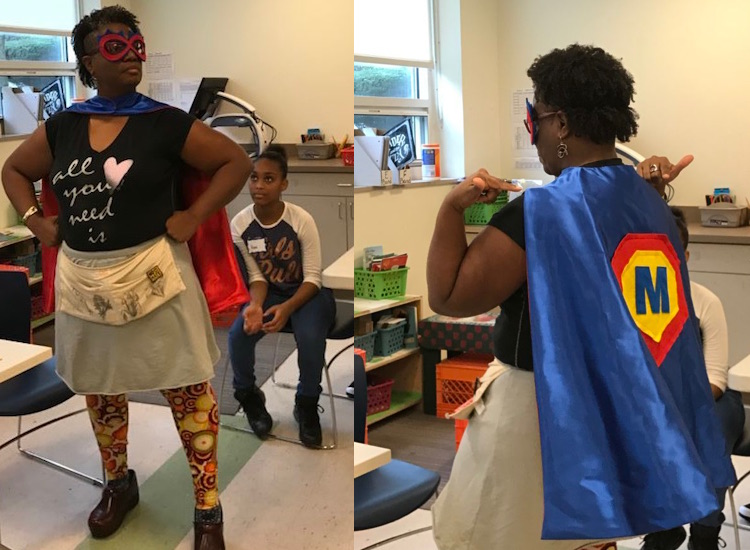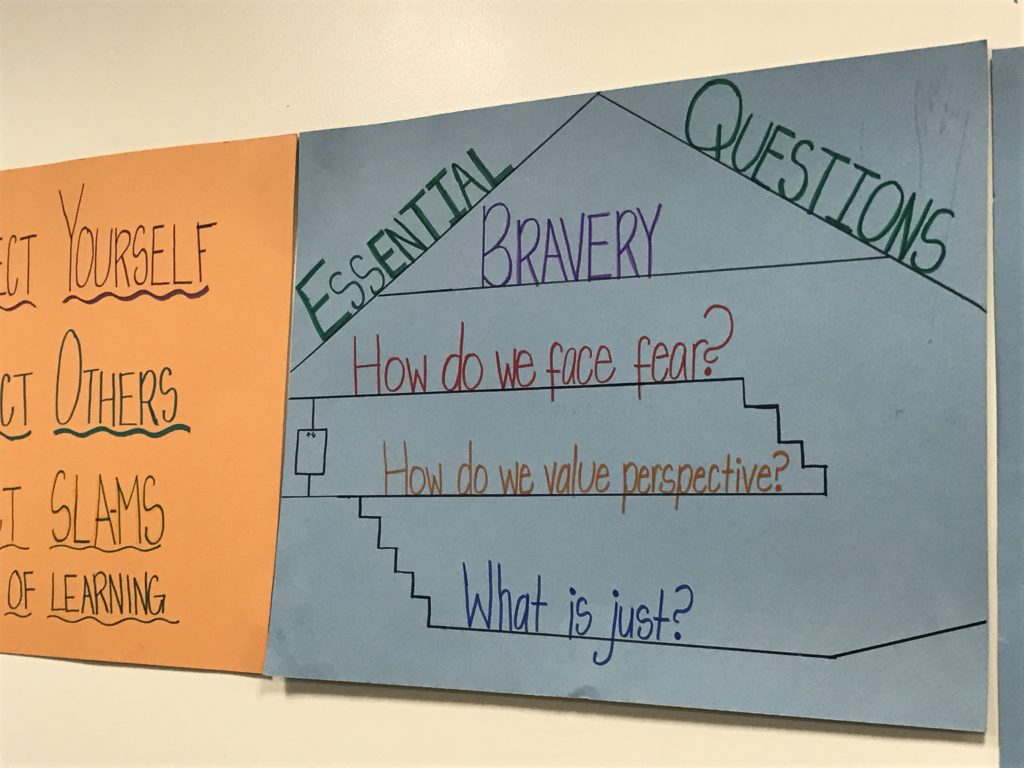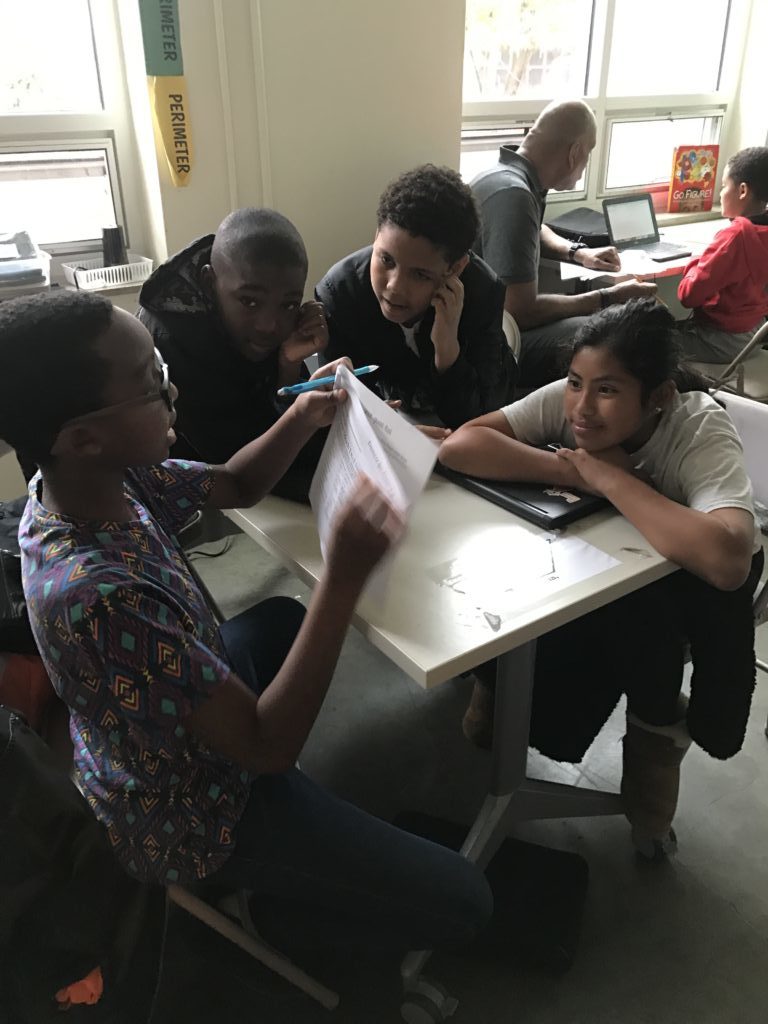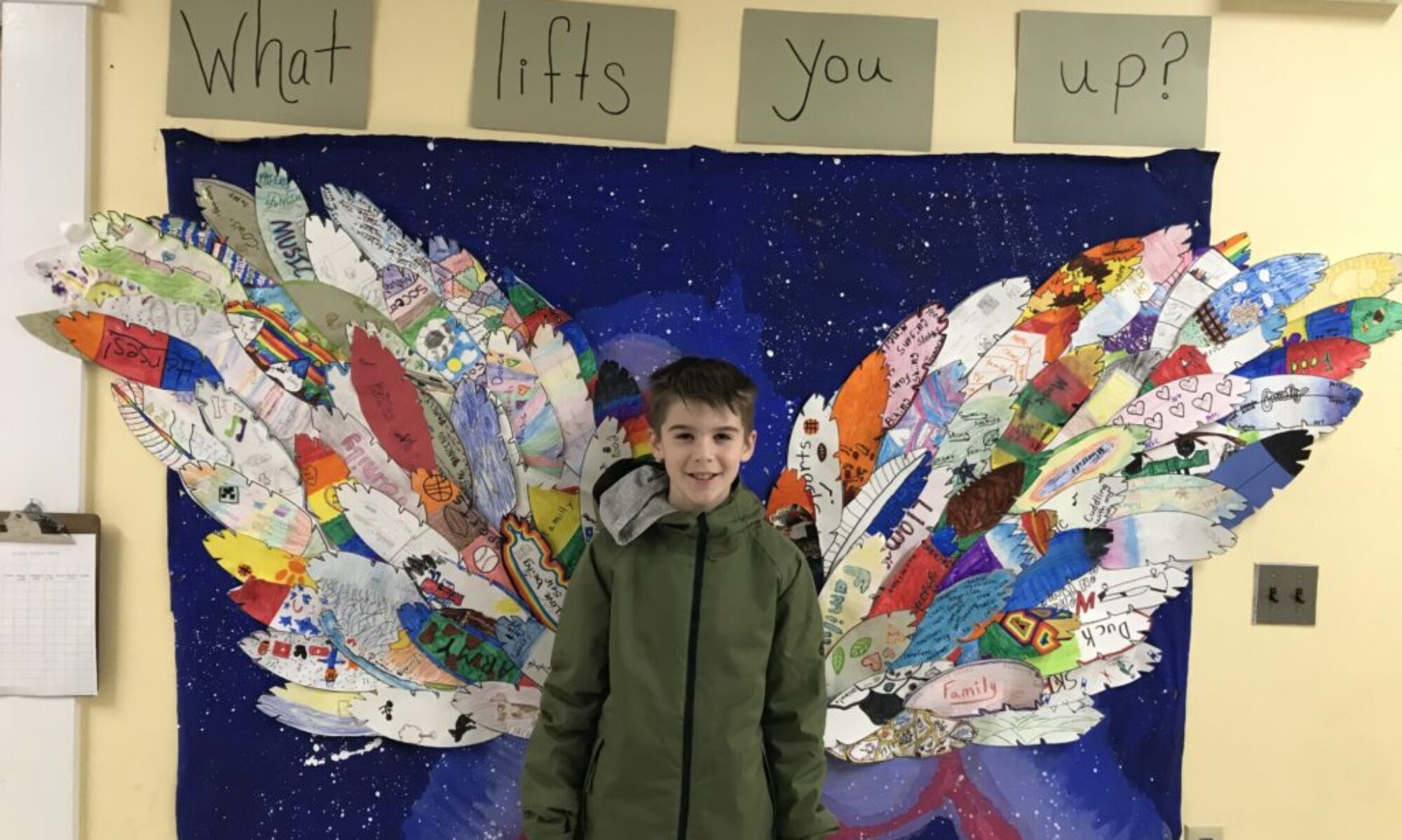How do you maximize student learning? What are the ways we can do this, and how might our roles and labels get in the way of helping all students?
Words matter. Job titles, given labels, justly or not, can affect how we feel about ourselves and our jobs. They can affect our we are perceived by our students, and how our students perceive themselves.
Meet Erika (aka Learning Maximizer)
Erika Saunders, of the Science Leadership Academy Middle School (SLA-MS) in Philadelphia, knows this. She’s a founding teacher at SLAMS, which is in its second year. She renamed her special educator position as a Learning Maximizer, and heads that department.
She even has this title on her classroom door, and well, also has her own Learning Maximizer official uniform. I’m pretty certain that Erika can save the world.

Meet Science Leadership Academy Middle School
SLA-MS is a project based learning focused middle school in its second year. Currently, it hosts fifth and sixth grade students, and will bring on a new grade each year, up until eighth grade.

The Core values of the school are:
- Inquiry
- Research
- Presentation
- Reflection
- Collaboration
This is rooted in relevant project-based work with community partners. Students sign up for mini-courses, often working with parents, community organizations, both on campus, and in the surrounding neighborhood.

At SLA-MS, they “unprivilege grades” and “privilege” community-based, relevant projects. All students DO. They collaborate, create on the computer, and work side-by-side with teachers.
All students are “OUR” students
Okay, back to the resident Learning Maximizer at SLA-MS.
According to Erika, every student at SLA-MS should have a Learning Maximizer. Erika shared her mindset for being a Learning Maximizer at SLA-MS, and it seemed especially powerful and inspiring.
Erika doesn’t view a certain set of students with learning disabilities as “her” students. All students at SLAMS are “her” students. She said:
“There are simply kids that have official paperwork, and students who don’t.”
When working with students, she teaches them learning strategies, and describes their reading, for example, at different levels, not “low.” These words matter. Just like her title. She asks students:
“What are you not good at yet?”
“You know how to do so many things. Let’s start with that, and figure out what don’t you know yet.”
Then she works with students to help them maximize their learning, by learning about themselves, their strengths and challenges, and how to work with those challenges.
Erika collaborates with teachers, meets with teams, and works toward being proactive instead of reactive in planning, teaching, and supporting students. Project-based learning provides her with many opportunities to promote relevance, engagement, and self-direction as she guides her students.
Philosophies at work
In her role as learning maximizer, we can see a combination of educational philosophies at work:
- Growth Mindset: Erika believes that all students have the ability to understand how they learn, and they can work together to make a plan to learn at optimal levels in a way that works for each students. How can we carry this message into our work? How can all teachers think about each student’s needs, backgrounds, and experiences and help them plan for their educations with growth mindset?
- Knowing students deeply: In order to help students learn at high levels, teachers need to know students well and have a trusting, strong relationship with them.
Street-level view of students
One way to know students deeply is to gather information about them in a way an ethnographic researcher would, according to this post in Edutopia. We can gather data about students at different levels to help us connect to students and to plan the best strengths based education plans as possible.
Just how do we do this? By asking questions such as these:
- Tell me one way you’re feeling successful in my class.
- Tell me one area in which you’re struggling.
- How do you learn best?
- What feedback do you have for me?
- How could I support you to feel successful?
Do these questions sound familiar? This is just the approach Erika is taking in how she speaks with students about their learning.
Culturally responsive learning environments maximize student learning. This can come about through student interviews and focus groups, and by tracking class participation and academic language.
These learnings can become part of a student’s learning profile, and can be featured and reflected upon in students’ personalized learning plans. That way, students have a place to regularly reflect on their own learning, their growth, and their goals for the future.
What’s your tagline?
In her work to maximize learning, Erika is trying to level the playing field, and create a culturally responsive learning environment rooted in strengths and growth mindset.
Erika shared her tagline that she shares with adults, that guides her work and focus:
“Righting the things that were once wrong.”
Erika inspires me. Special educators and education is often left out, or not deliberately included in, discussions, professional development, plans and reading about personalization. But most of the time, these are the very people that have experience personalizing for students, crafting activities, lessons and assessments to meet individual needs.
Personalization and true student engagement is rooted in knowing our students well, and helping them understand how they best learn. Special educators are key partners in this journey, and can help lead the way.
What would happen if we thought of special educators (or learning maximizers) as personalization specialists, and resources for all students and teachers?
What if every single teacher (and person who works in schools) thought of all students as “their” students, and helped to create a learning environment where all students are known and we are all learning maximizers?
How can you be a learning maximizer?


One Reply to “Are you a “Learning Maximizer”?”
Comments are closed.